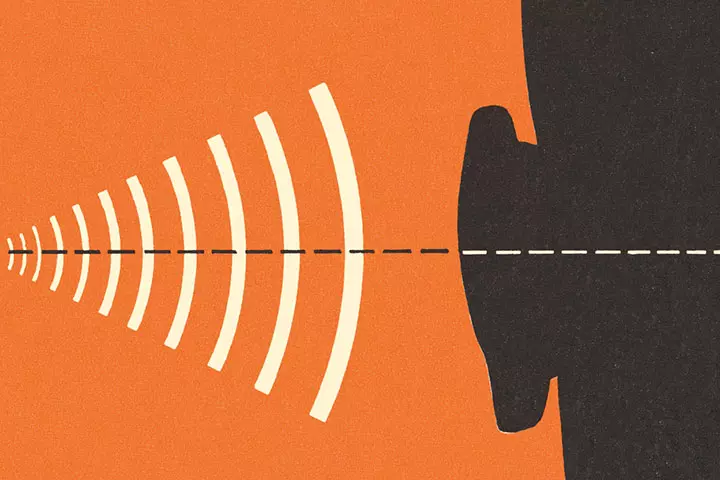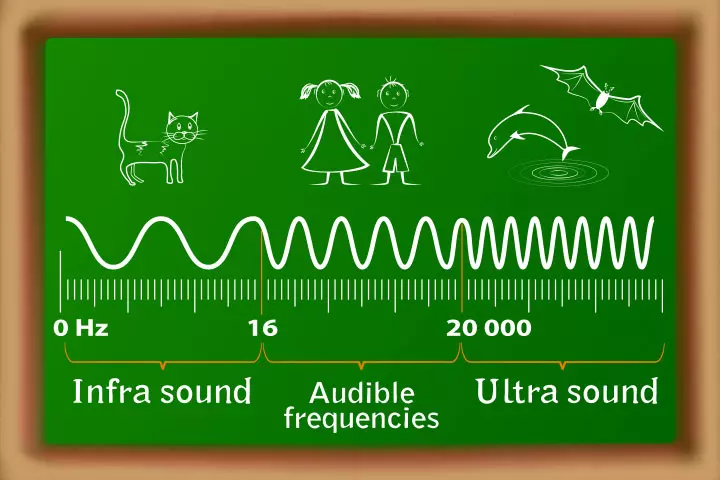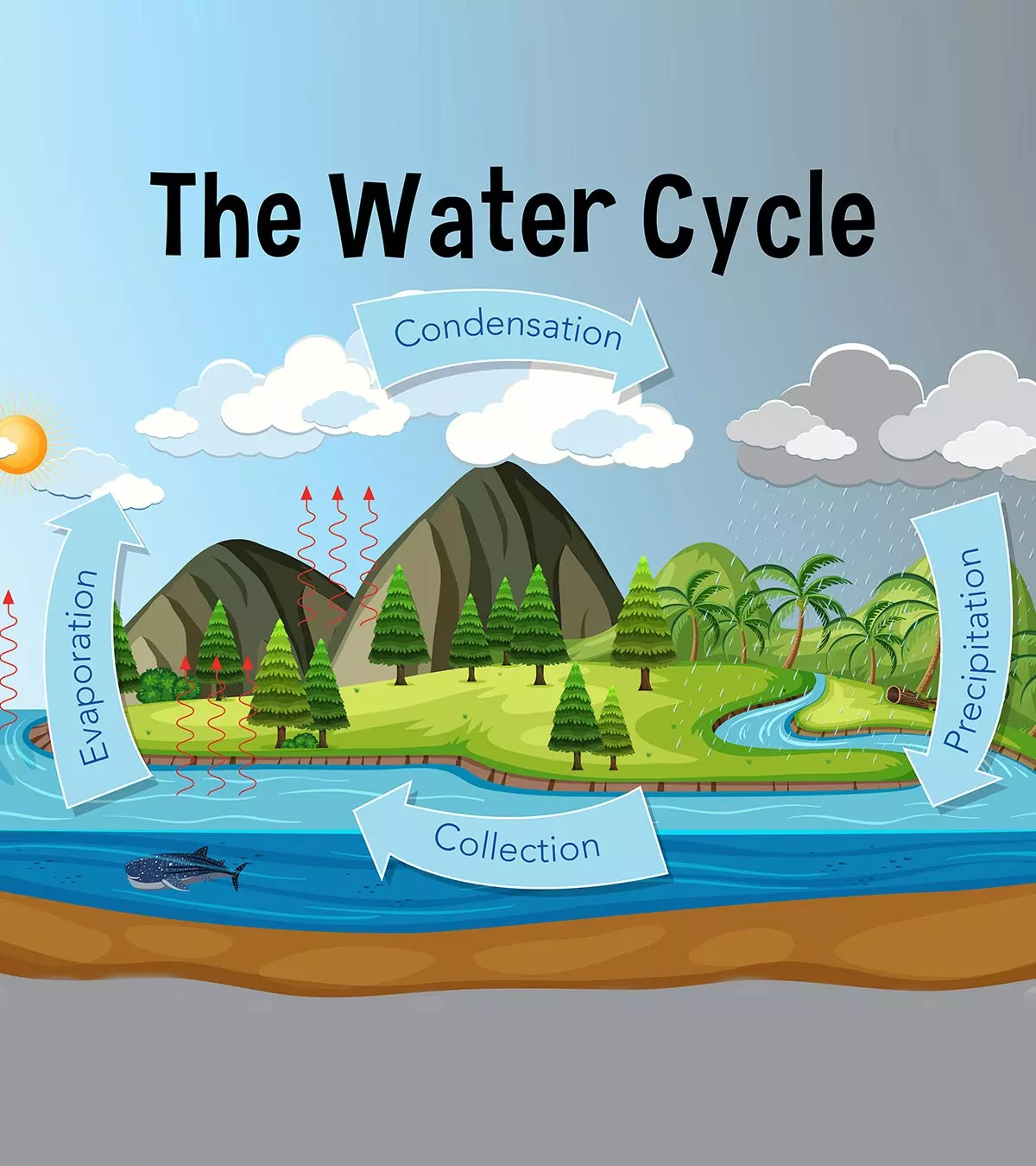
Image: Shutterstock
Children are often amazed that sound can only be heard and not seen. Such sound wave facts for children can be a great way to make them aware of how sounds travel and what makes them audible. Sound waves are everywhere and vital for communication, music, and even safety. Understanding them helps us better appreciate the world around us. So if your child is curious, you have come to the right place. Provide your budding physicistiA scientist of studies and trains in physics with all the knowledge available to help them explore the field in detail. So, here we have curated a list of fun, interesting, and educational facts about sound waves. Read on to learn more and quiz the little scientist at home.

Key Pointers
- Sound waves require a medium or object, such as water or air, to travel through as they are a form of energy.
- Pascals or decibels are the units of measurement for sound, while frequency is measured in Hertz, or vibrations per second.
- There are three types of sound waves: audible, ultrasound, and infrasound waves.
- Sound waves can travel through solids, gases, and liquids, but not through a vacuum.
15 Sound Wave Facts For Kids
1. What Is A Sound Wave?

A sound wave is a mechanical wave which requires a medium or object, such as water or air, to travel through. In fact, a sound is a form of energy resulting due to the vibrationsiPeriodic to and fro motion of the particles in a medium of moleculesiSmallest unit into which a pure substance can be divided while still retaining its properties of matter, and you hear the sound when the sound waves pass through a medium to your ears.
- Like other waves, sound waves possess amplitudeiThe relative strength of the sound waves, which may be identified as the loudness , volume, velocity, frequency, and speed.
- When an object applies a force on some other object, a sound originates. For instance, when you hit a drum, it vibrates, and its vibrations make the air molecules move resulting in a generation of a sound wave.
- Waves are essential in the work of various researchers such as astronomers, geologists, and sound engineers, who rely on their characteristics and behavior to study their respective fields.
2. How Do Sound Waves Travel?
The energy present in the sound wave moves outward from the source in a series of pulses from air molecule to air molecule. When the series of sound wave pulses squash they are called compressions and when they spread out it is called rarefaction. Sound waves travel by creating compressions and rarefactions in the air. The ability to identify the direction or source of a sound is referred to as sound localization.
3. How Do You Measure The Sound?
- You measure noise in pascals or decibels instead of measuring it in Joules, the traditional energy measurement unit.
- You gauge the frequency of sound in Hertz i.e. vibrations per second.
- A perception by a person having normal hearing sensation helps calculate the intensity of sound energy.
- Also, the measurement of sound is related to its pressure, and sound waves are also famous as pressure waves as they move the particles in the medium through which they pass.
4. How Different Kinds Of Sounds Occur?
Different kinds of sounds occur because sound waves possess different frequencies. Frequency is the total number of sound waves or vibrations occurring in one second. The various frequencies that constitute a sound can be observed in the sound spectrum.
- You can hear high pitched sounds and low pitched sounds.
- High pitched sounds result due to sound waves with high frequencies. For instance, the whistling sound.
- Low pitched sounds occur due to sound waves with low frequencies. For example, the sound of bass drums.
- Also, faster are the vibrations, the louder is the sound, and slow ones produce mild sound.
- The ear distinguishes between sounds with identical pitch, tone, and loudness based on their distinctive attributes, which is referred to as sound quality or timbre. The primary determinant of a sound’s timbre is its harmonic content.
5. What Are Different Kinds Of Sound Waves And Which Can We Hear?

1. Audible Sound Waves:
Audible sound waves possess frequencies between 20 Hz to 20 kHz and these sounds you can hear easily. Humans can hear sound waves between 1000 Hz and 6000 Hz the best.
2. Ultrasound Waves:
Sound waves that possess a frequency greater than 20 kHz are well-known as ultrasound waves, and you cannot hear this type of sound waves. Animals, such as dolphins and bats, use ultrasound waves to locate their prey and communicate.
3. Infrasound Waves:
Sound waves that have a frequency less than 20 Hz are known as infrasound waves, and you cannot hear infrasound waves.
6. Why Sound Waves Are Not Suitable For Generating Electricity?
Sound waves tend to generate relatively lower levels of the energy levels than other forms of energy. Since any sound produces low energy levels, you don’t prefer to use it for the generation of electricity as it requires high levels of energy.
7. Does Sound Wave Create A Shock Wave?
Yes, sound can generate a shock wave. Sharp and repetitive sounds, like when you are drumming, when the object vibrates at a high speed can lead to shock waves. A sudden bang or clap creates a shock wave. While, a shock wave resulting due to a clap is benign, a shock wave, which occurs due to an explosion is dangerous as it can kill numerous people.
8. How Fast Do Sound Waves Travel?
- Sound waves travel at the speed of 767 miles per hour i.e. 1230 km per hour.
- Sound waves travel through solid matter, such as iron, stone, and steel, must faster than it moves through the air.
- Also, noise tends to go through a liquid media, such as water, four times faster than it travels through the air.
9. Why Do Astronauts Cannot Hear Or Talk In Space?
Sound waves can travel only through solids, gases, and liquids; however, they cannot pass through vacuum. Space doesn’t contain any medium for sound waves to travel, and it’s full of vacuum. So, astronauts cannot hear or talk to each other in the space. They require a radio to listen and communicate.
10. What Is A Resonance?
A glass of wine vibrates at a normal frequency, and an opera singer can break such a glass with a high musical note. The musical note needs to have a frequency that is equal to the natural frequency of the glass. As the frequencies of the note and glass are the same, the sound energy transfers onto the glass, which vibrates so intensely that it is shattered. The phenomenon is called resonance. You can use the technique to improve the sound of some kinds of musical instruments.
 Quick tip
Quick tip11. What Is A Deafening Sound?
The noise that a jet aircraft makes during its takeoff tends to be million times louder than the sound you hear regularly. Such thunderous sounds are known as deafening soundsiExtremely loud sounds causing intense pressure or discomfort to the ear that can cause pain in your ears and damage them significantly.
12. What Is A Doppler Effect?

The change in wavelength and frequency of a wave due to the change in distance between the sound source and the receiver of the sound is called Doppler Effect.
- As the source of sound moves towards someone its frequency increases.
- When you step away from the source of sound or vice versa, the frequency of the sound decreases (1).
13. How Do Stringed Musical Instruments Produce Music?
Various stringed instruments possess a series of stretched strings on them, for instance, violin. When you press down one of the strings with your finger, its length changes, and it vibrates at particular frequencies producing different sounds. If you make a short stroke on a metallic cord, it generates a loud sound while a long stroke tends to create soft music. Also, the thickness of the string matters, and it determines the sound intensity.
14. How Can You Record The Sound Waves?
A microphone can change the sound waves into electrical signals that fall and rise in a particular pattern which is identical to the sound wave pattern that you try to record. You can store auditory waves by using analog recording technique, in which you store sound wave pattern as a wavy groove cut into a plastic disc. You can also save the model as a magnetic pattern on a plastic tape.
15. What Is A Digital Sound And Why It’s Better Than Analog Sound?
You can record and transmit sound waves to a digital signal, which holds a particular pattern of the desired sound waves in a digital series that you can store on a digital tape, CD, or a computer system. When you play the signal, the stored digital pattern changes back into sound waves.
Even though analog sound recordings create an exact copy of the desired sound wave pattern, creating several copies of the original records can add extra noises and distort the unique pattern. However, digital recordings have a pattern of numbers you can copy and correct multiple times without distortion. So, digital sound recording is always preferable to analog recording (2).
15 Sound Wave Fun Facts For Kids
- The scientific study of sound waves is well-known as acoustics.
- Sound waves bend when they happen to hit an object or any corners of an object.
- Light travels faster than sound so we can see the thunderbolt before we hear its sound.
- Thomas Edison developed the first-ever audio recording and recited ‘Mary Had a Little Lamb’ in his phonograph in 1877.

- You can hear the different sound because when the sound enters your ear, then the ear also vibrates. Our brain understands and interprets the sound environment through auditory perception.
- Flies cannot hear at all; they are deaf.
- Bats produce a series of high-frequency clicks i.e. 12,000 Hz to 150,000 Hz to find their way in the darkness of night, and they have highly sensitive ears that listen to the echoes.
- Dogs have more ears sensitive than a human’s ears so they can hear high-frequency sounds that you cannot hear.
- Male grasshoppers make a loud rasping sound of about 7,000 Hz to 100,000 Hz by scratching their hardened wing cases on the pegs located on their rear legs and listen with their ears that are present on their abdomen.
- Howler monkey hoots at 400 Hz to 6,000 Hz.
- Frog croaks at 50 to 8,000 Hz, and elephant trumpets at 10 Hz to 10,000Hz.
- Whales communicate with one another underwater, and their sound and songs travel up to 800 km quickly in the ocean.
- A baby can cry at 115dB, and his sound is louder than a car horn.
- If a human being can yell for eight years, seven months, and six days at straight, then he can produce sound energy that can heat up a cup of coffee.
- The loudest natural sounds on the earth occur due to the massive volcanic eruptions, such as the volcanic explosion on the island of Krakatoa.

Did you share these fun sound wave facts with your kids? Which audio fun facts your children found astonishing? Share your experience and knowledge with fellow moms by leaving a comment below.
Now that you know so much about sound waves, let’s put the knowledge to test! Once you’re done, you can surely brag about this to your friends! Play on!
1.Which of the following is not a sound wave?
Infrared Sound WavesiSound that is not audible to human ears because of its considerably low frequency
2. Mark off an incorrect sound fact!
Sound waves apply pressure as they pass through objects.
Sound travels faster than light.
Dogs’ ears are more sensitive than humans’ ears.
3. Which animal’s sound value is incorrect?
Frog croaks at 80 to 8,000 Hz
Howler monkey hoots at 400 Hz to 6,000 Hz.
Elephant trumpets at 10 Hz to 10,000Hz. Sound has so many functions! And did you know about any of these before? Well, let’s see how you did on the test.
Frequently Asked Questions
1. What makes a sound wave louder?
The greater the amplitude, the louder the sound (3). Amplitude is the maximum distance traveled by a point on a wave or vibrating body measured from its equilibrium position.
2. What happens when a sound wave travels from air to water?
When a sound wave moves from air to water, the sound particles come closer and quickly transmit vibration energy from one particle to another. Due to this, the speed of the sound (sound velocity) in water is over four times faster than in the air. However, the energy taken to start the vibration increases considerably (4).
3. How powerful are sound waves?
The loudest possible sound on the Earth’s surface is 194dB. The higher the frequency of the wave, the more powerfully piercing the sound waves will be (5).
4. Can sound waves move things?
Yes, sound waves can move things. For instance, high-intensity ultrasound waves can hold objects in mid-air, a phenomenon called acoustic levitation. Scientists have used this phenomenon to levitate insects and individual cells (6).
5. How can sound waves be harmful to our hearing?
Anything above 20 kHz is believed to be loud for humans and may harm your ears. Listening to them frequently may damage the hair cells in the cochlea in the inner ear, eventually leading to their death. Any damage to the inner ear is usually permanent (7).
6. How do our ears detect sound waves?
Sound waves enter the outer ear and travel through the eardrum, where it vibrates and is transmitted to the inner ear. These vibrations make the cochlear fluids move, stimulating the hair cells and sending signals to the brain. Then, the brain interprets these signals as sound (8).
7. How does the speed of sound change in different materials?
Temperature, rigidity, and density of the material are dependent factors for the speed of sound. It travels faster in warmer, less compressible, less dense materials (9).
8. What are some fun sound experiments for kids?
A fun sound experiment for kids is making homemade sound instruments. By using things around the house, kids can create simple instruments like a rubber band guitar or a water xylophone. This activity helps them learn how sound is made. Another exciting experiment is sound wave visualization. Fill a shallow dish with water, place a speaker nearby, and play different sounds. Kids can see how the water moves when the sound waves hit it, making sound easier to understand.
How sound waves travel and what they can do are some intriguing questions that excite young minds. To satiate their intuitiveness, share informative sound waves facts for kids with your children. They are a part of science facts for kids that inform them about sound waves, their different types, and much more that keeps your child entertained and engaged. Besides, it will help your child understand sound waves, which will help them in their academics. So, use these facts to make a trivia or arrange a quick quiz that will help you and your child have some fun learning time together.
Infographic: Interesting Facts About Sound Waves
Children are often curious about the science of sound. It is a form of energy that travels through a medium through waves. The infographic below enlists some intriguing facts about sound waves for your little scientist.
Some thing wrong with infographic shortcode. please verify shortcode syntaxIllustration: Unknown Sound Wave Facts And Information For Kids

Image: Dall·E/MomJunction Design Team
Experience the wonders of sound as it travels through the air, reaching our ears and awakening our senses. Watch this video to learn more about sound!
References
- What is the Doppler effect?
https://phys.libretexts.org/Bookshelves/University_Physics/University_Physics_(OpenStax)/Book%3A_University_Physics_I_-_Mechanics_Sound_Oscillations_and_Waves_(OpenStax)/17%3A_Sound/17.08%3A_The_Doppler_Effect - Digital Radio.
https://www.fcc.gov/consumers/guides/digital-radio - What Makes Sounds Louder?
https://www.wonderopolis.org/wonder/what-makes-sounds-louder - Sound on the move.
https://www.sciencelearn.org.nz/resources/572-sound-on-the-move - Sound on the move.
https://www.sciencelearn.org.nz/resources/572-sound-on-the-move - Levitating Objects Using Sound.
https://kids.frontiersin.org/articles/10.3389/frym.2025.678021 - Charlotte Agrup et al.; (2007); The inner ear and the neurologist.
https://pmc.ncbi.nlm.nih.gov/articles/PMC2077664/ - Basics of Sound, the Ear, and Hearing
https://www.ncbi.nlm.nih.gov/books/NBK207834/ - Speed of Sound, Frequency, and Wavelength.
https://openstax.org/books/physics/pages/14-1-speed-of-sound-frequency-and-wavelength
Community Experiences
Join the conversation and become a part of our nurturing community! Share your stories, experiences, and insights to connect with fellow parents.
Read full bio of Theresa Bertuzzi
Read full bio of Manjiri Kochrekar
Read full bio of Harshita Makvana
Read full bio of Ghazia Shah



















